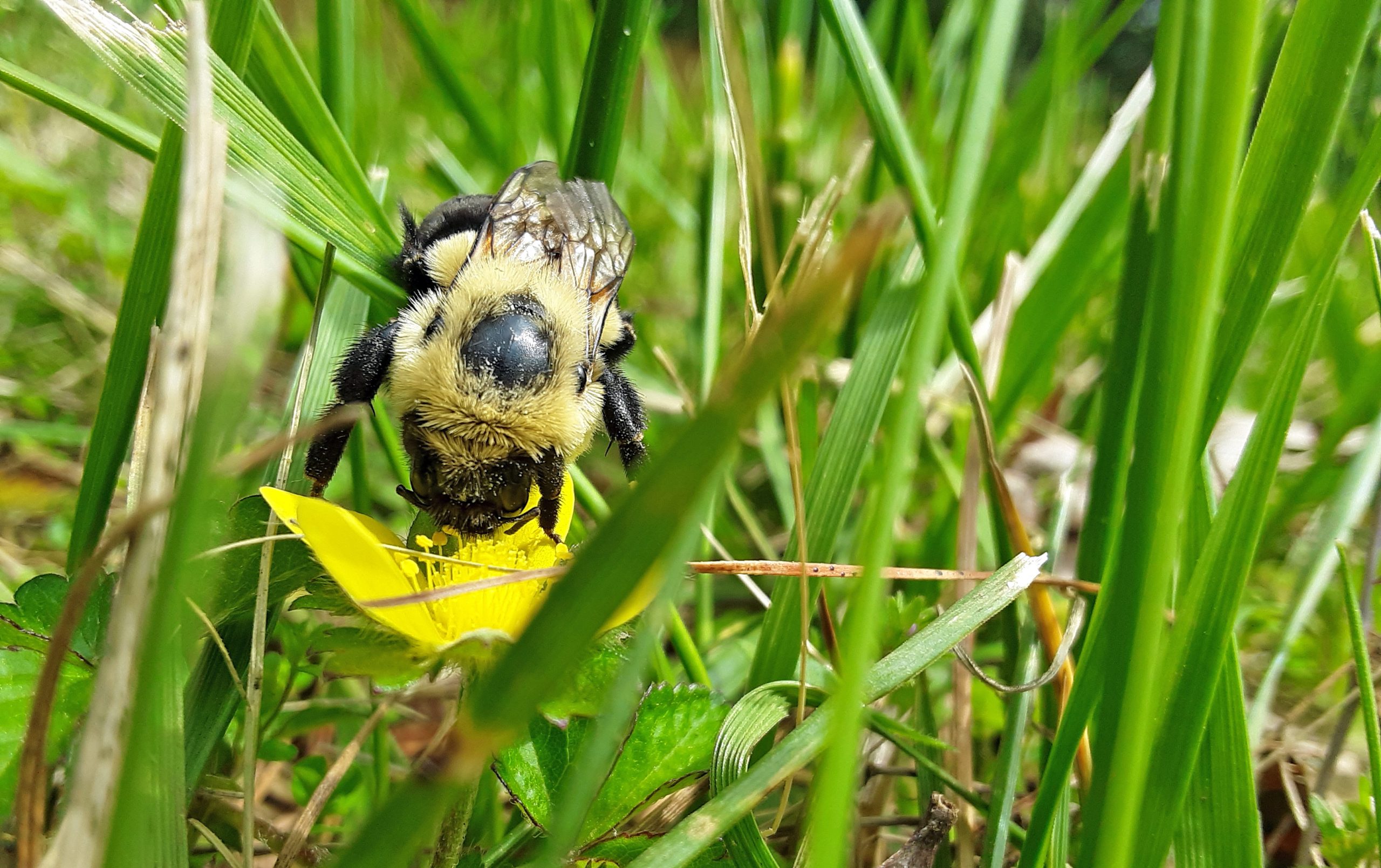I love spring, the season of rebirth. Every day the leaves grow bigger, new flowers burst into bloom, and the yellow buzzing cotton balls known as carpenter bees dive-bomb me nonstop on my back deck. One might presume this would be quite the annoyance, and in the past, I’d have heartily agreed. Until the day I met Dandelion two years ago and fell in love.
It was late March in Virginia, where the whether changes from day to day like a wardrobe. The daffodils had already sprung up, but the crisp 40-degree winds of winter still kissed my cheeks. Hunched over almost lifelessly on my front porch one morning was a fuzzy yellow and black ball, a carpenter bee who’d crawled out to greet the sun and been stunned by the plunging overnight temperatures. He’d lost the energy to fly, and without his wings, he’d never be able to travel to his next meal.
I scooped up the creature, and he buzzed in my hands. I quickly filled an oversized Tupperware with a damp paper towel, some blades of grass, a few dandelions, and a capful of organic sugar water. I coaxed this new friend to the dish, where he immediately began sucking up the liquid with his long proboscis, resembling a miniscule winged elephant of sorts.
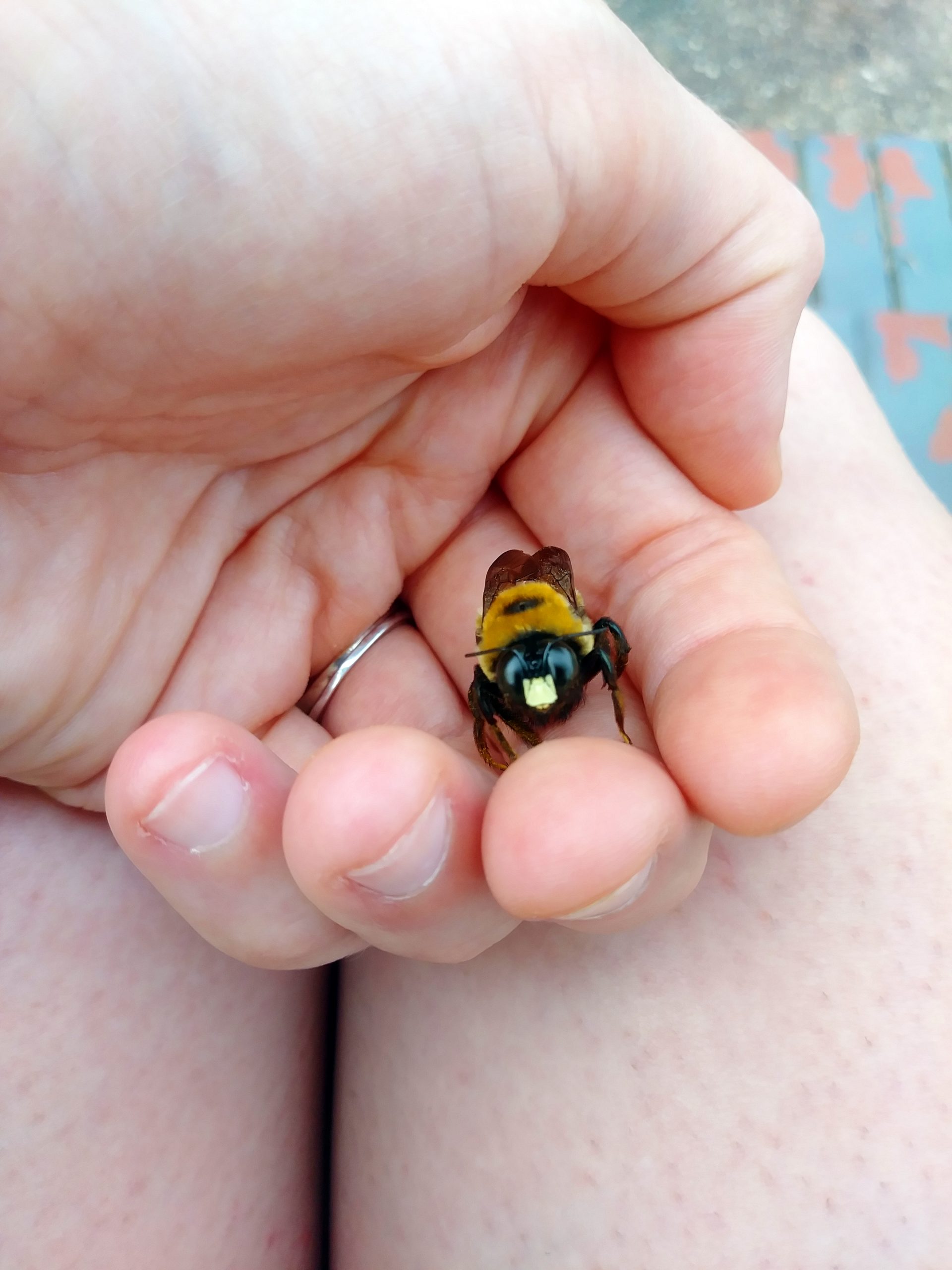
Dandelion, as I immediately christened him, spent about a week with me. Each morning I’d replace his supply of flowers and sugar water, and he’d lap up the beverage and spend the day sipping from the array of flowers like a wine tasting at a vineyard. He’d hang out in my lap buzzing sporadically, yet still unable to muster enough strength to take flight. While he was in my care, I read up on these fascinating insects, learning pretty early on not to fear Dandelion or others of his kind: despite their overt aggression and stalker-like behavior (anyone else been followed around your yard by a zealous bee, hovering inches from your face and staring menacingly yet adorably into your soul?), male carpenter bees can’t actually sting.
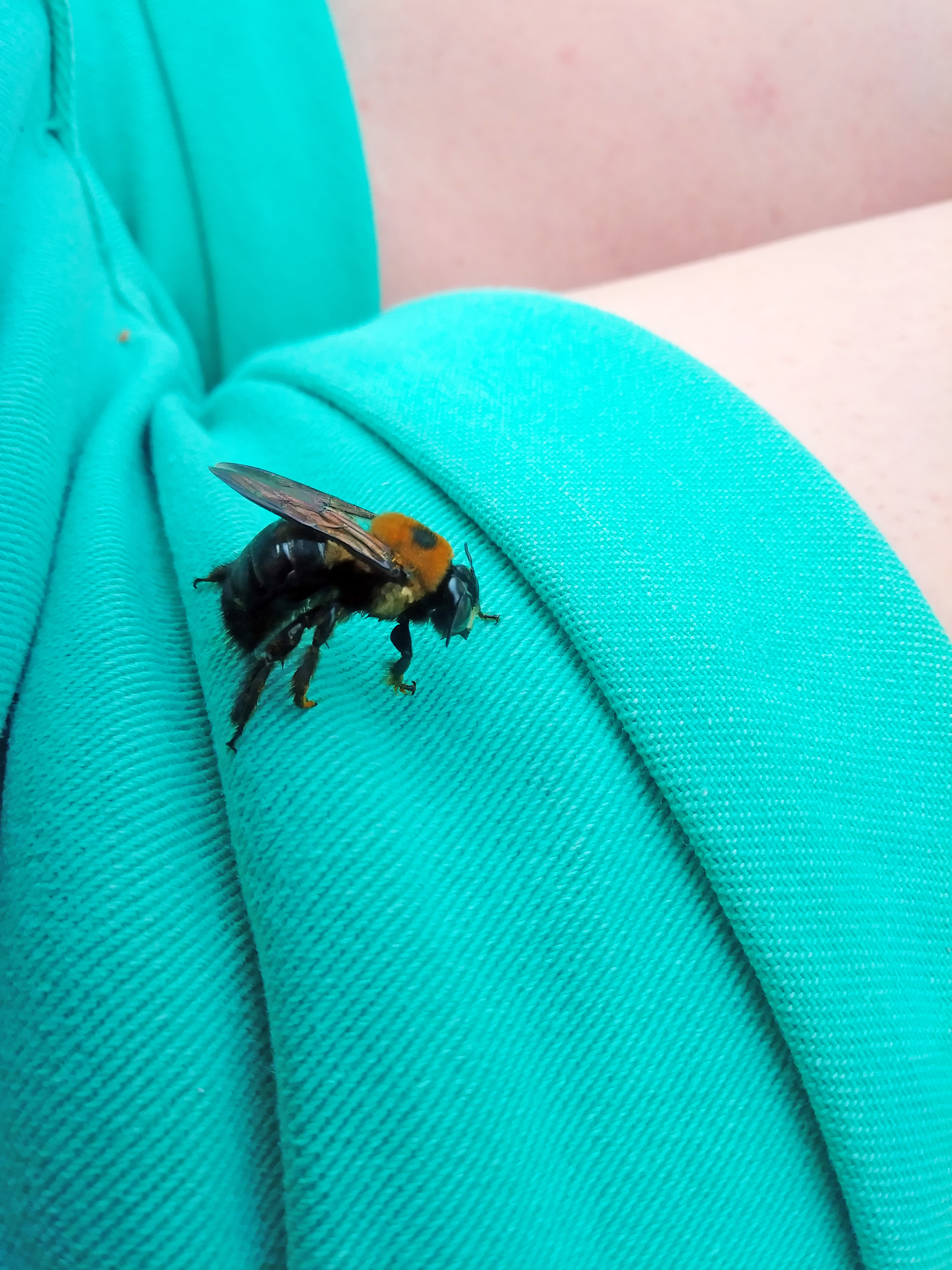
While males are out strutting their stuff, female carpenter bees, I learned, live with their sisters in sorority fashion, caring for one another and taking on specific roles within a social hierarchy to keep the nest running smoothly. And while they can sting, they only do so under dire circumstances.
Since that spring, I’ve spent hours watching carpenter bees diligently deconstruct the wooden boards in my deck, as, true to their name, they burrow into wood to nest. Listening closely, I can hear their soft scratching sounds like tiny saws. Instead of agonizing over how much putty I’ll need to fill these precisely carved tunnels, I remind myself that I’m a mere visitor here, in their home. And my deck is host to an extraordinary, unbreakable sisterhood.
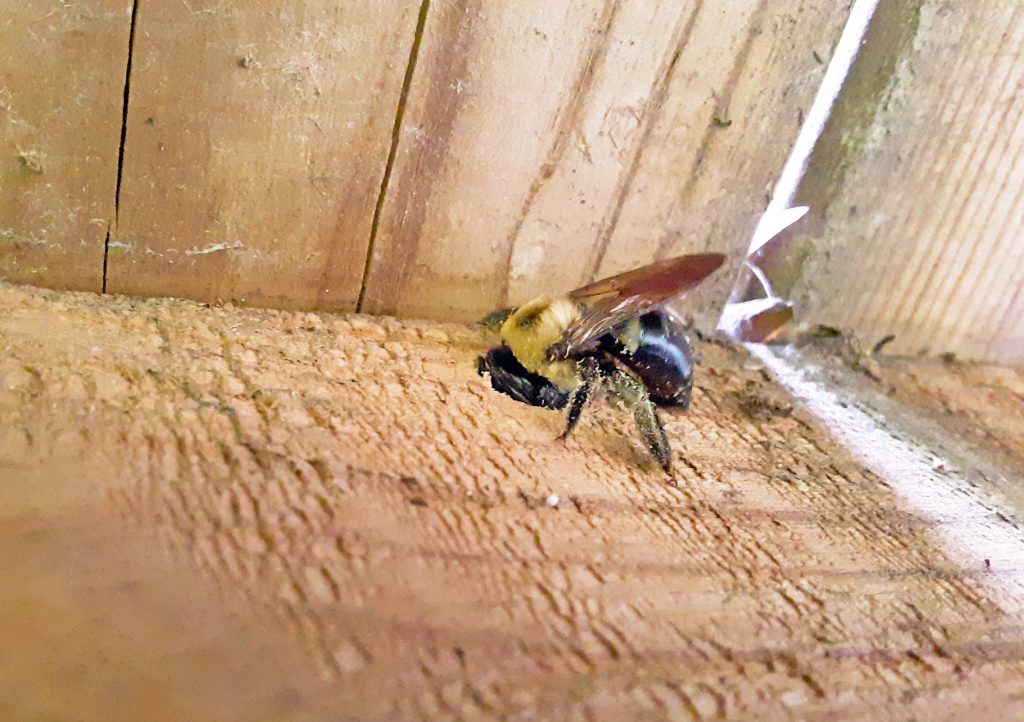
If you’re still unconvinced of the magic I see in bees, consider this: researchers at Queen Mary University of London taught a group of bees in 2017 to move a ball to a certain position to access sugar water. The bees easily mastered this task, unsurprisingly. Then, when new bees were introduced to the experiment and observed their peers completing the task and being rewarded, they, too, learned to do it. But their intelligence didn’t stop there—the new bees invented more efficient ways to get their sugar fix, like picking balls that were situated closer to the target. They innovated.
These results support an earlier study that discovered that bees could learn new tasks with increasing complexity for food, and they could subsequently somehow communicate their discoveries to their friends.
Perhaps, most remarkable, however, is how bees’ social adaptation skills can measure up to, or even actually trump, our own. Bees have long been observed to perform a “waggle dance” to show other bees abundant food sources. But when a find is unappetizing, the bees do a smaller dance, or don’t dance at all. Other bees respond appropriately in either case and will even leave more crowded feeding spots for a higher quality opportunity, avoiding “maladaptive herding,” a phenomenon in which blindly following the masses results in the spread of misinformation (2020 conspiracy theories, anyone?).
To test this capability in humans, researchers devised an experiment in which participants had to choose among three slot machines, trying to win as much money as possible, while being allowed to observe other participants. The results:
“[A] challenging task elicited greater conformity and the copying increased with group size. This suggests that unlike bees, when large groups are confronted with tough challenges, collective decision-making becomes inflexible, and maladaptive herding behaviour is prominent. … [W]e should be more aware of the risk of maladaptive herding when these conditions – large group size and a difficult problem – prevail. We should take account of not just the most popular opinion, but also other minority opinions.”
Imagine where we’d be if more of us humans detected and strayed from harmful ideologies, platforms, and demagogues. Imagine if we were as discerning and skilled participants as bees are in our own democracy.
Back to that spring two years ago. One morning I came downstairs to find Dandelion zipping around his enclosure, and I knew his time had come. I picked a balmy 70-degree day and released him soaring back into the wild. His departure saddened me, but I knew it was his job to go out and pollinate the world. After all, bees are responsible for pollinating 90 percent of our food, and without them, in a reality that could be right around the corner, we’d lose half the groceries we take for granted today. I can’t imagine a bee-less world, but we’re catapulting toward it every day with our pesticides, pollution, and habitat destruction.
In the U.S., for instance, between 1947 and 2008, the honeybee population plunged from 6 million to 2.4 million, or about 60 percent. This is largely attributable to our pesticide use on massive scale. According to Greenpeace, scientists have discovered over 150 different pesticides within granules of pollen, and major corporations like Bayer and DuPont “shrug their shoulders at the systemic complexity, as if the mystery were too complicated. They advocate no change in pesticide policy. After all, selling poisons to the world’s farmers is profitable.”
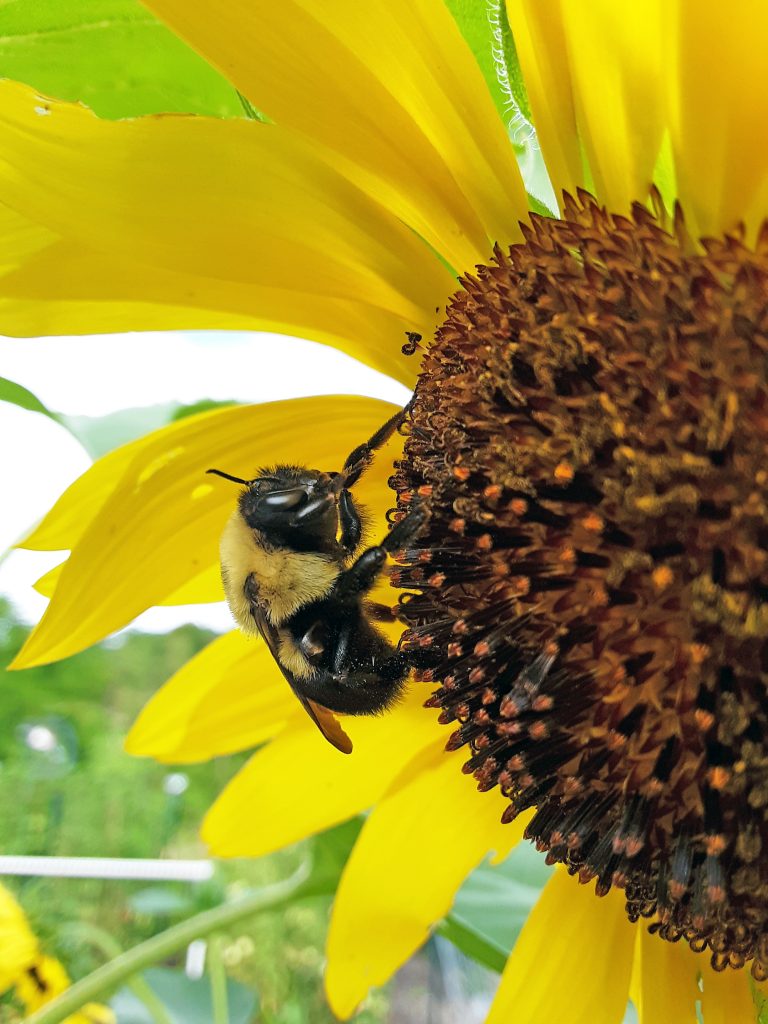
Do your part to protect our pollinators. Maintain a bee-friendly yard with no pesticides. Leave the dandelions in your yard, as they are emerging bees’ first spring snack. Purchase organic produce when you can, and work to secure better access for others, especially those in food apartheids. Support an American ban on neonicotinoids, a particularly deadly class of pesticides that’s already banned in the European Union and which may be responsible for the deaths of up to up to a third of U.S. beehives. Be on the lookout for stunned bees like Dandelion in early spring, and leave out shallow bowls of water (filled with rocks) for them and other insects.
Despite their (endearing) dive-bombing and deck-destroying proclivities, bees give us life—so let’s preserve theirs.


